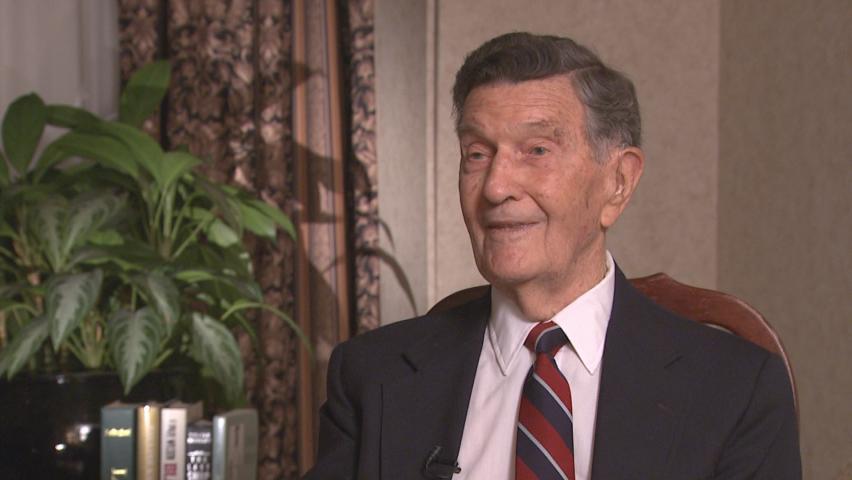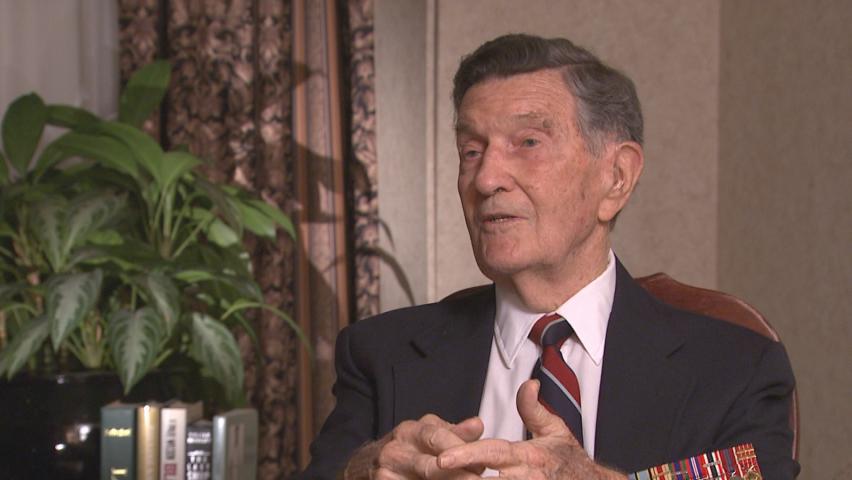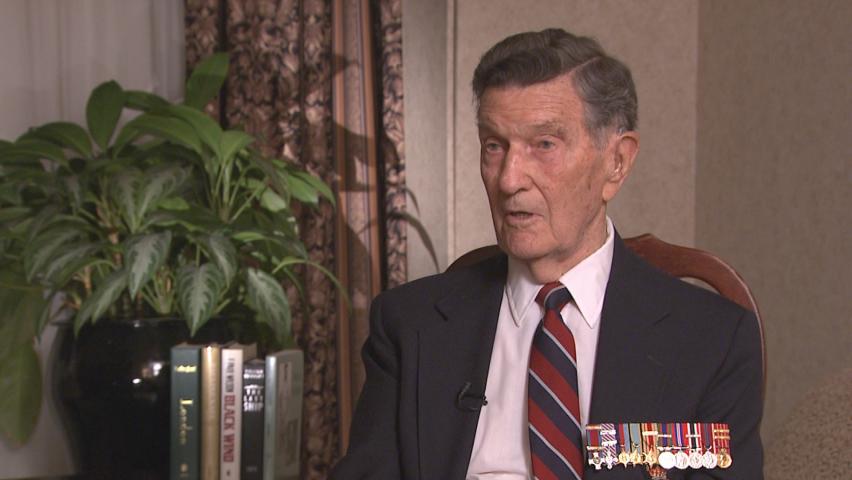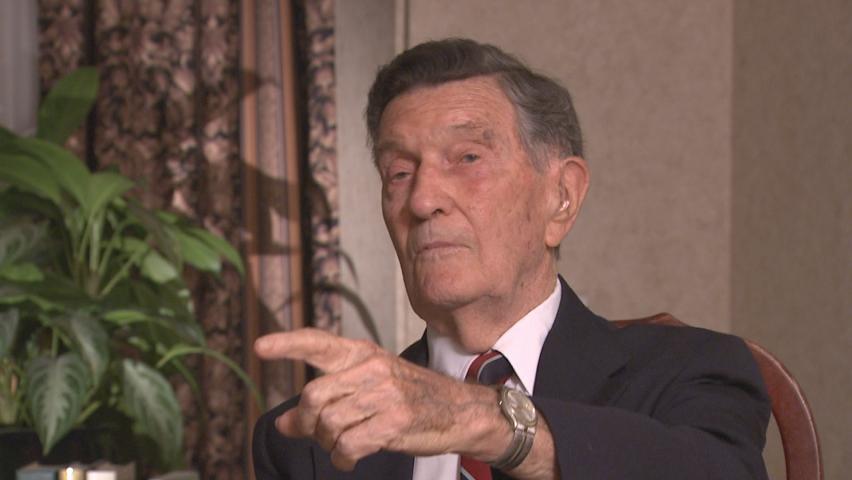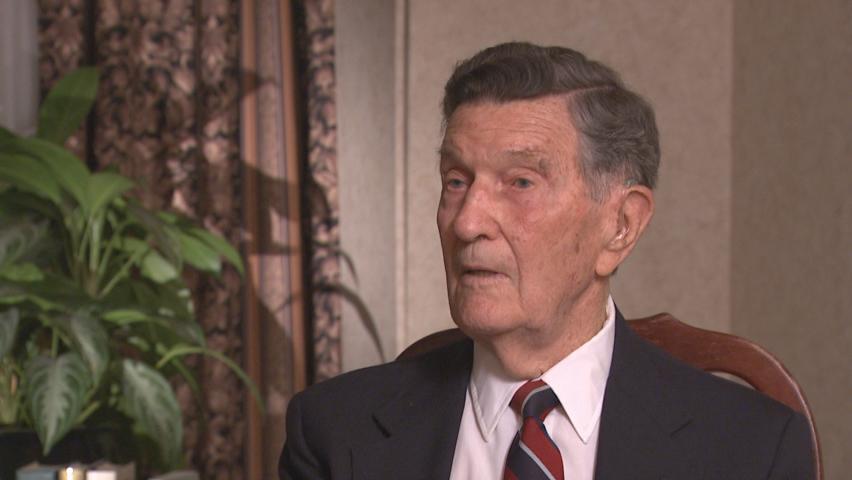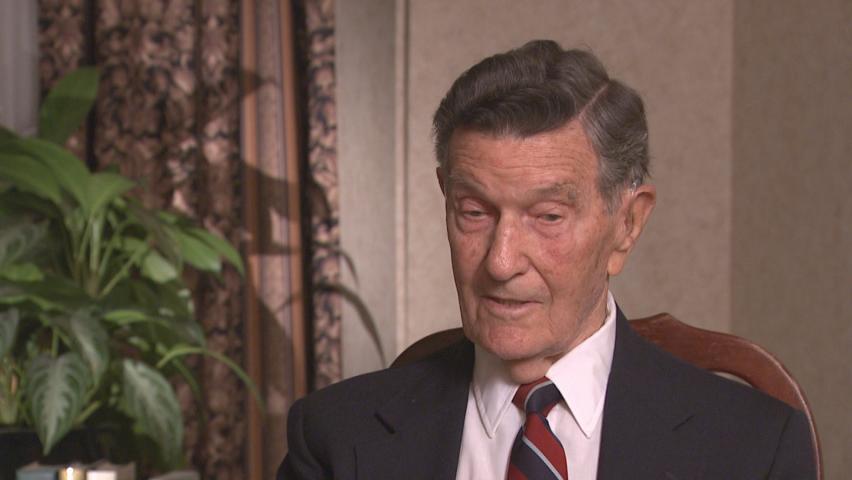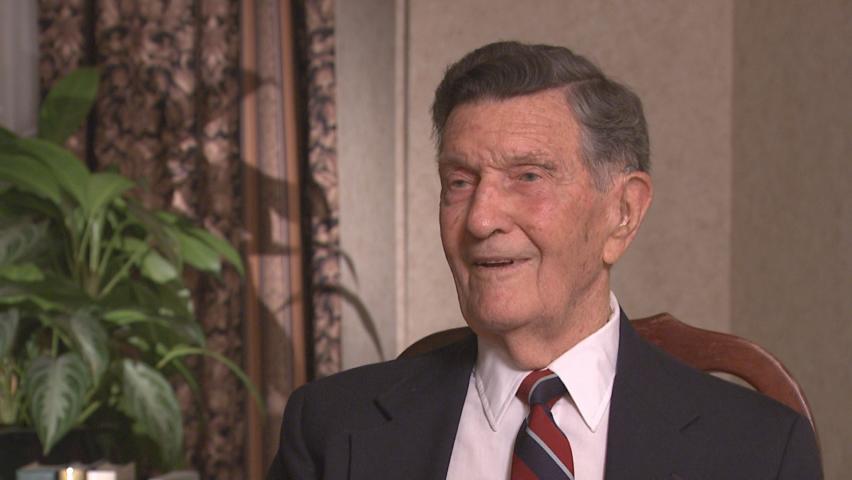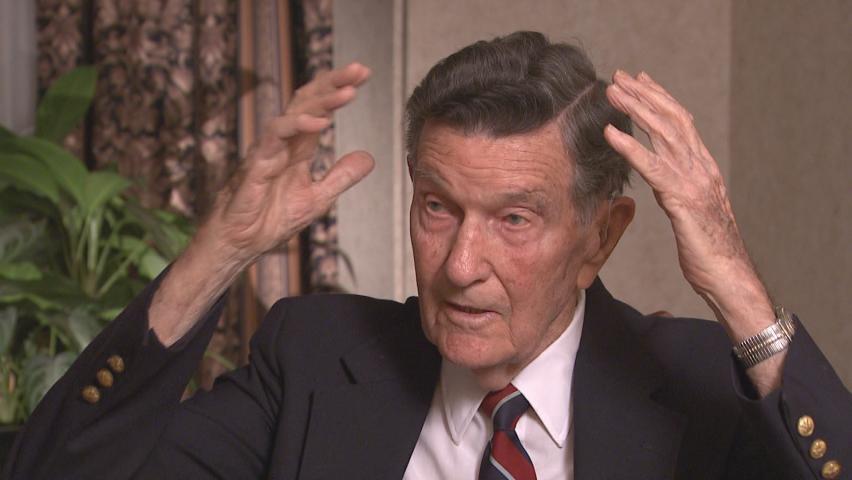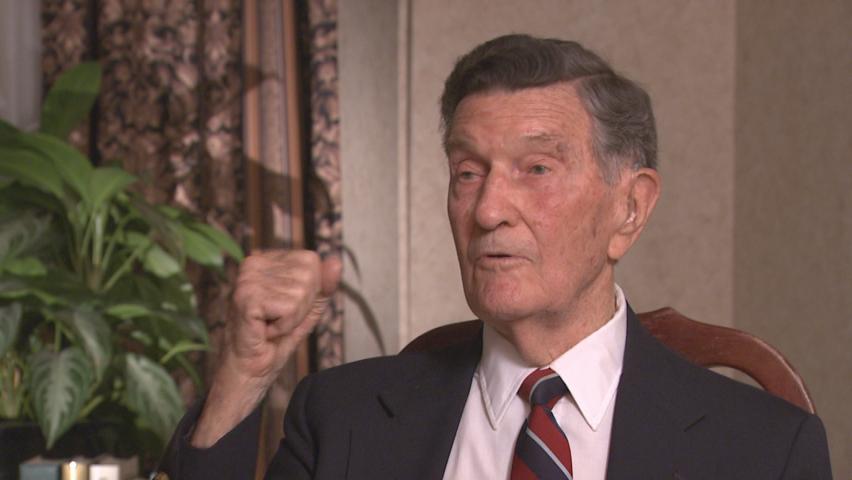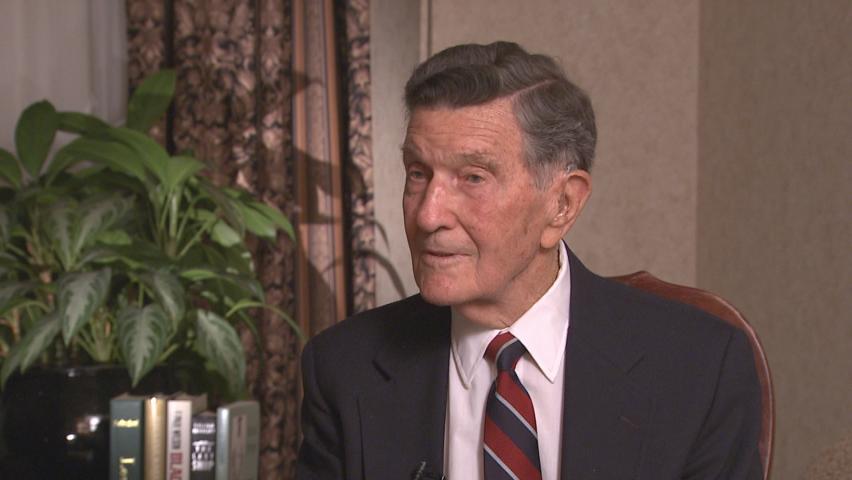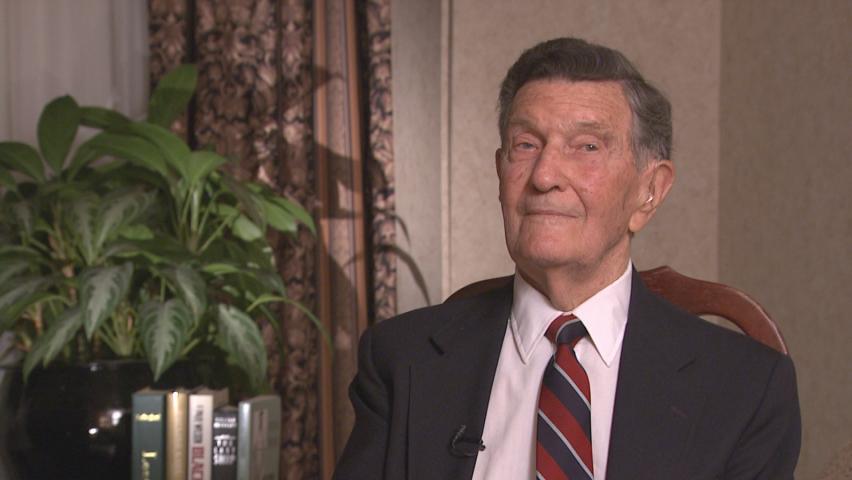It was fortunate because our wireless operator
had been able to get the set working.
He had sent out an SOS and he had
locked down the key which makes the signal
keep going until of course it went into
the water and we weren’t sure but we felt
they must be looking for us and we sat in
the dinghy waiting and waiting and waiting and
finally we sort of caught the glimpse a
way off in the thing, it looked like a ship coming
and it was coming, it looked like in our direction.
Of course, we stood up shaking, you know,
didn’t make any difference, literally speaking.
The kind of cartridge-type things we had for alerting
were all wet so they didn’t work and
we watched this ship, and it was a ship,
coming and it was heading towards us and
then it sort of started to swing completely
around in reverse to be heading away
and we thought, oh God,
they haven’t seen us sort of thing.
And what had turned out, it just kept going
in the circle and came right back and started
heading for us again.
The young skipper, it was a mine sweeper,
and he had been standing on the prow of
the ship with his glasses up and as the
thing swung around, he was just swinging it
with the horizon and fortunately in the up and
down of the waves, as he was there,
he caught this flicker and, of course,
a dinghy is an orangy kind of colour and
he caught this flicker of colour and what we
didn’t know is we were on the edge of
a minefield and he had reached the edge
of the minefield and was turning to go back
because he wasn’t going to go into the
minefield and when he saw this flicker
of colour he said we had been on many
searches and we’ve never found anybody,
he said when I saw that I thought
we’re going to see.
That’s when they made the complete
circle and they came for us.
And when they came, of course, they were
absolutely overjoyed that they had found
us as much as we were overjoyed that
they had found us and they got us
onboard the ship, took us down below,
got us out of our flying gear,
gave us some escape gear and
then said you need a hot drink or
anything like this.
They took us ashore, we were cleared
by the hospital and then we had
to take a train to get back to base and,
of course, we were in our escape
gear on this point of view and the
navy hospital had cleaned our battle
dress sort of thing, so we still had our
battle dress available and I even had my
navigation chart tucked in because
I wanted to be able to prove
of what we had done.
We became at that point members of
what was called the Wing Goldfish Club
which was anybody who used a dinghy
to save their life in an emergency
became a member of the
Wing Goldfish Club and we became
members of the Wing Goldfish Club
and we got seven days
escapees' leave at the time.



